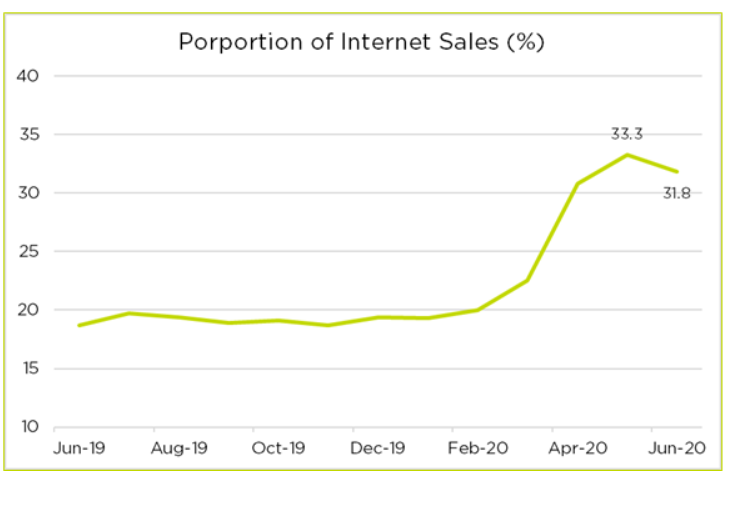Subrahmaniam Krishnan-Harihara, Head of Research at Greater Manchester Chamber of Commerce, looks at how the retail sector has performed since non-essential shops reopened in June.
One complaint many people may have had during the early days of lockdown is that they were unable to go out and enjoy some glorious sunshine. Indeed, those who broke the restrictions by venturing out were rightly condemned. More recently, as non-essential retail stores, restaurants and bars have opened, dark skies and rain have descended, providing a convenient ice breaker topic for online meetings. Economically speaking, the opening of the non-essential retail in June appears to have crossed the first hurdle.
The reopening of non-essential retail stores began mid-June but not all stores opened immediately. Towards the end of June, many retail stores had reopened and footfall in shopping districts has surged to the highest levels since March 2020. This contributed to a monthly increase in retail sales of 13.5% in volume terms (1) and 13.1% in value terms (2). This represents the second consecutive month of strong growth following record declines in March and April 2020. With increases in both value and volume measures in June when compared with February, the index for retail sales has returned to similar levels as before the coronavirus lockdown.

Does this then mean that disappointing developments about store closures and lay offs in the retail sector will be reversed? Certainly not. The opposite is probably true – the recent growth in overall retail sales portend difficulties for in-store shopping. Within the overall growth story, lie some trends that reflect how Britain’s shopping habits have changed during the pandemic. The ONS has reported that non-store retailing has reached a new high level in June 2020. With continued growth during the pandemic, e-commerce sales have increased 53.6% in volume when compared with February 2020. Lockdown restrictions have largely benefited online sales and the longer social distancing measures must be kept in place, greater the benefit for online sales. The British weather may also have played a small part: footfalls in key shopping districts picked up as stores opened but bad weather since then could have caused a stabilization since then. The proportion of internet sales3 has increased significantly since February 2020 and in June, nearly a third of all sales took place online.

The reopening of shops is an important step on the road to recovery but for the sector itself, the pandemic and its aftermath present enormous challenges. Home improvements, acquisition of technology products and food shopping went up during the pandemic but benefited online sales. Recent announcements of stores closures and job losses are part of this larger picture. The problems facing the retail sector are not new but the pandemic has radically changed consumer behaviour - although many stores have re-opened as lockdown measures were eased, online shopping is likely to remain the preferred way to shop, at least for some more months as consumers remain anxious about safety and even a possible second wave. Therefore, the cheer around retail growth will not warm the high street. That requires more than a bout of good weather. It will necessitate various measures - reform of the business rates system, flexibility in leasing terms and assistance for smaller retailers in adopting digital technologies.
Finally, what does retail sales data tell us about economic recovery? The good news is that it is indicative of consumers’ willingness to spend. More than a third of consumer spending in the UK is directed towards retail. If the growth in retail is replicated in other sectors, that would bode well for overall economic recovery. Notwithstanding, the gloomy changes in high street giants, two months of sustained and strong growth in sales is a cause to cheer and if enough people raise a glass to toast this data in Britain’s pubs and bars, July could be a good month too.

